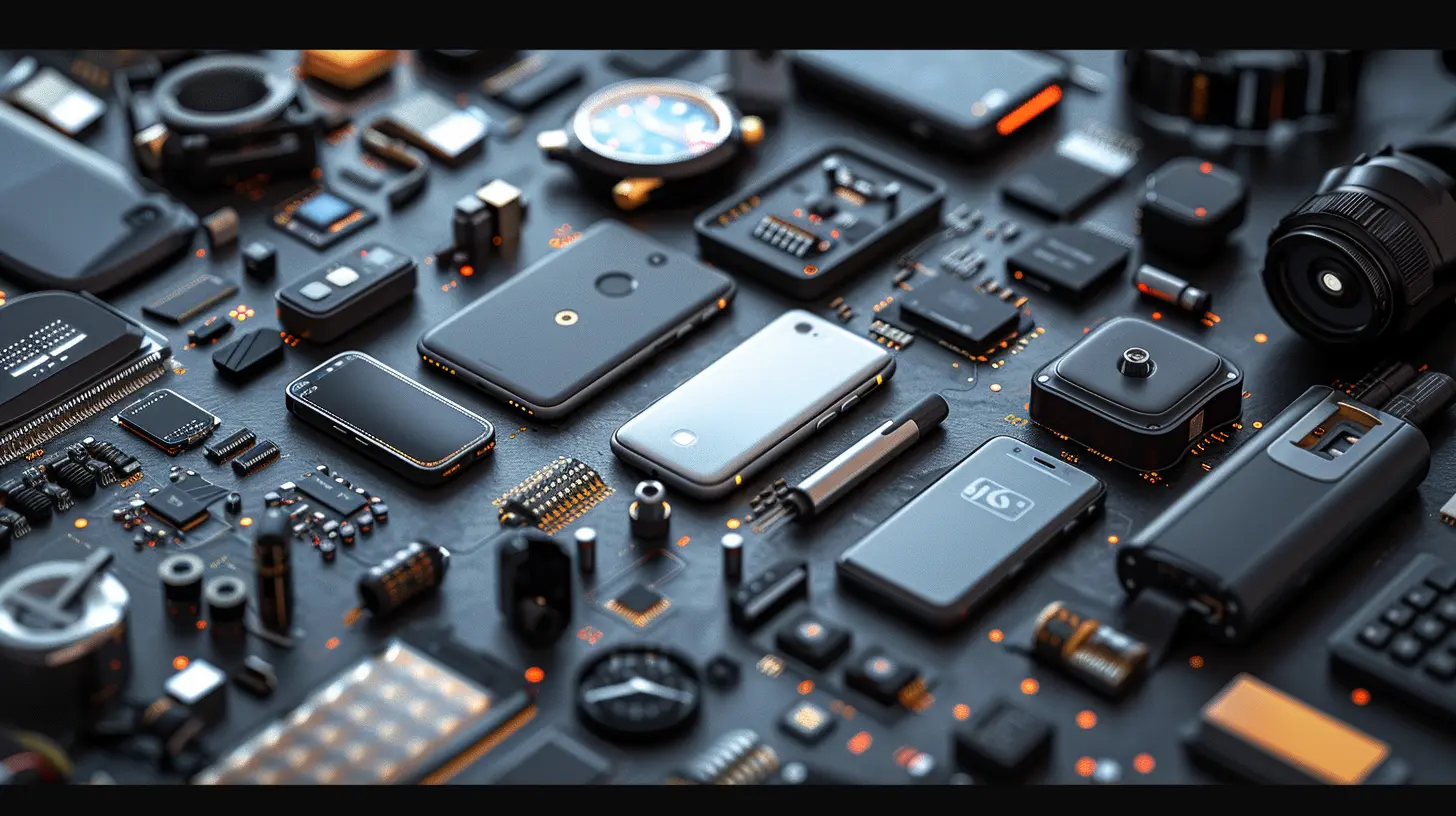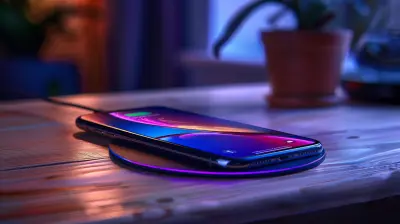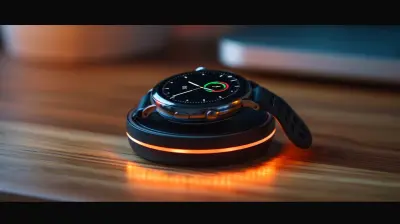11 February 2025
Wearable devices have evolved at an incredible pace over the past few years. From smartwatch fitness trackers to smart glasses, these gadgets have become an integral part of our daily lives. But have you ever stopped to wonder what makes these tiny, powerful devices tick? Sure, they pack a lot of advanced technology into a compact form, but none of it would work without one crucial component: the battery.
Without advancements in battery technology, wearable devices would be bulky, short-lived, and—let's face it—impractical. So, let's dive into how modern battery technology is empowering wearable devices and why this tech is so critical for the future of wearables.

The Role of Battery Technology in Wearables
Wearable tech has to strike a perfect balance between functionality, comfort, and power. No one wants to wear a smartwatch that feels like strapping a brick to their wrist. At the same time, we expect these devices to do everything from tracking our heart rate to receiving notifications and even running apps. All of this requires energy, and that’s where battery technology comes in.Advances in battery technology are what allow wearables to be smaller, lighter, and more efficient. Without these improvements, we’d be stuck with chunky, short-lived devices that aren’t nearly as convenient or useful.
The Power Problem
One of the biggest challenges in wearable tech is power. These devices are designed to be worn all day (and sometimes even at night). The battery needs to last long enough to make it through a busy day of notifications, fitness tracking, and other features without needing a recharge every few hours. Yet, they also need to remain lightweight and unobtrusive, meaning the battery can’t take up too much space.It’s a bit of a Goldilocks scenario: the battery has to be just right. Too small, and it won’t last long enough. Too big, and the device becomes uncomfortable to wear.
That’s why the advancements we’re seeing in battery technology are so important. They’re enabling us to cram more power into smaller, lighter batteries, making wearables more practical and user-friendly.

Types of Batteries Used in Wearable Devices
Let’s break it down. Not all batteries are created equal, and different types are used depending on the needs of the device. Wearable tech has specific requirements: it needs to be lightweight, energy-dense, and safe for users. Here are some of the most common types of batteries currently used in wearables.Lithium-Ion Batteries (Li-Ion)
Lithium-ion batteries have become the go-to option for wearables, and for a good reason. They offer a high energy density, which means they can store a lot of power in a relatively small package. This makes them ideal for small devices like smartwatches, fitness bands, and even wireless earbuds.The downside? Li-Ion batteries can degrade over time, especially after many charge cycles. However, with the improvements in battery chemistry and management systems, manufacturers are finding ways to prolong the life of these batteries. In short, they’re reliable, efficient, and widely used.
Lithium Polymer Batteries (Li-Po)
Lithium-polymer batteries are a close cousin to Li-Ion but offer more flexibility in terms of shape and size. They’re often used in wearables that need a slim, compact design, like fitness trackers or smart clothing.Li-Po batteries have a slightly lower energy density compared to Li-Ion, but they make up for it by being more versatile and safer. They’re less prone to swelling and leaks, which makes them a good option for devices that need to be worn directly on the body.
Solid-State Batteries
Solid-state batteries are the next big thing in battery tech. Unlike traditional batteries that use liquid or gel electrolytes, solid-state batteries use a solid electrolyte. What does this mean for wearables? Better energy density, longer battery life, and improved safety.While we’re still in the early stages of mass production for solid-state batteries, they hold a lot of promise for the future of wearables. Imagine a smartwatch that could last for weeks on a single charge or smart glasses that could run all day without needing to be plugged in. That’s the potential of solid-state technology.

How Battery Efficiency is Evolving in Wearables
Battery technology is evolving fast, and it has to, in order to keep up with the growing demands of wearable devices. Here are some key ways that battery efficiency is improving in wearable tech.1. Smaller, More Efficient Batteries
One of the most significant advancements in battery tech is the ability to make smaller batteries without compromising on power. Thanks to improvements in materials and design, we’re able to stuff more energy into a smaller space. This allows wearables to become sleeker and more lightweight without having to sacrifice battery life.For example, fitness trackers used to be much bulkier, but now some models are so slim you barely notice you’re wearing them. Yet, they can still last for days on a single charge. This is all thanks to advancements in battery technology.
2. Fast Charging Technology
Let’s be honest: no one likes waiting around for their device to charge. Fast charging technology is making a massive difference in the wearable world. With quick charging capabilities, you can juice up your smartwatch or fitness tracker in a fraction of the time it used to take, meaning less downtime and more convenience.Some of the latest wearables can provide hours of use from just a few minutes of charging. This is a game-changer for people who rely on their devices to track their workouts, monitor their sleep, or stay connected while on the go.
3. Energy Harvesting
Imagine never having to charge your wearable again. Sounds too good to be true, right? Well, energy harvesting might just make that a reality in the near future. This technology involves capturing ambient energy from the environment—things like body heat, movement, or even sunlight—and converting it into power for your wearable.While we’re not quite there yet, energy harvesting is already being tested in some wearable devices. For example, some smartwatches can extend their battery life using solar power. In the future, we may see wearables that can run indefinitely just by capturing energy from the world around us.

The Impact of Battery Tech on Wearable Design
Battery technology doesn’t just affect how long your device lasts between charges; it also has a big impact on the design of the device itself. As battery tech improves, wearables are becoming smaller, lighter, and more comfortable to wear.1. Slimmer, More Attractive Devices
Let’s face it: no one wants to wear an ugly, clunky device. The more compact and efficient the battery, the sleeker and more attractive the wearable can be. This has a huge impact on the overall user experience. With smaller batteries, designers have more flexibility to create wearables that are fashionable and unobtrusive.This is especially important in categories like smart jewelry or fitness trackers that need to blend seamlessly into your lifestyle. No one wants to wear a fitness tracker that looks like a piece of medical equipment. Thanks to advances in battery tech, we’re seeing more and more wearables that look stylish and feel comfortable.
2. Flexible and Wearable Anywhere
As batteries get smaller, they also become more flexible. This opens up new possibilities for wearable tech. We’re now seeing the development of flexible batteries that can be integrated into fabrics, allowing for smart clothing that can monitor your health, track your movements, or even give you a little extra warmth on a cold day.Imagine wearing a shirt that can monitor your heart rate, or shoes that can track your steps and gait. These kinds of innovations are only possible because of the improvements in battery technology that allow for smaller, more adaptable power sources.
The Future of Battery Technology in Wearables
So, what does the future hold? As battery technology continues to evolve, we can expect wearables to become even more powerful, efficient, and integrated into our lives. Here are some trends to watch:1. Solid-State Batteries Going Mainstream
As we mentioned earlier, solid-state batteries are one of the most exciting developments on the horizon. They offer higher energy density, longer life spans, and improved safety over traditional lithium-ion batteries. Once these become more widely available, we can expect wearables to have even longer battery life and faster charging times.2. Self-Charging Wearables
Energy harvesting is still in its infancy, but the potential is huge. In the future, we could see wearables that never need to be plugged in. Imagine a smartwatch that charges itself using your body heat or smart glasses that stay powered by capturing sunlight. While this is still a few years away, the groundwork is being laid today.3. Advanced Battery Management Systems
Battery management systems (BMS) are also improving, allowing wearables to be smarter about how they use their power. These systems can optimize power consumption based on your usage patterns, ensuring you get the most out of each charge. We can expect future wearables to be even more efficient, with longer battery life and smarter power management.Conclusion
Battery technology is the unsung hero behind the wearable devices we use every day. Without the constant advancements in battery tech, wearables would be bigger, bulkier, and far less practical. As battery technology continues to evolve, we can expect wearables to become even more powerful, efficient, and integrated into our lives.Whether it’s the development of solid-state batteries, energy harvesting, or just more efficient battery designs, the future of wearables is closely tied to the future of battery technology. So, the next time you strap on your smartwatch or pop in your wireless earbuds, take a moment to appreciate the tiny battery inside that’s making it all possible.













Xeno Hudson
Fascinating! How will future batteries enhance wearable innovation?
March 26, 2025 at 3:31 AM